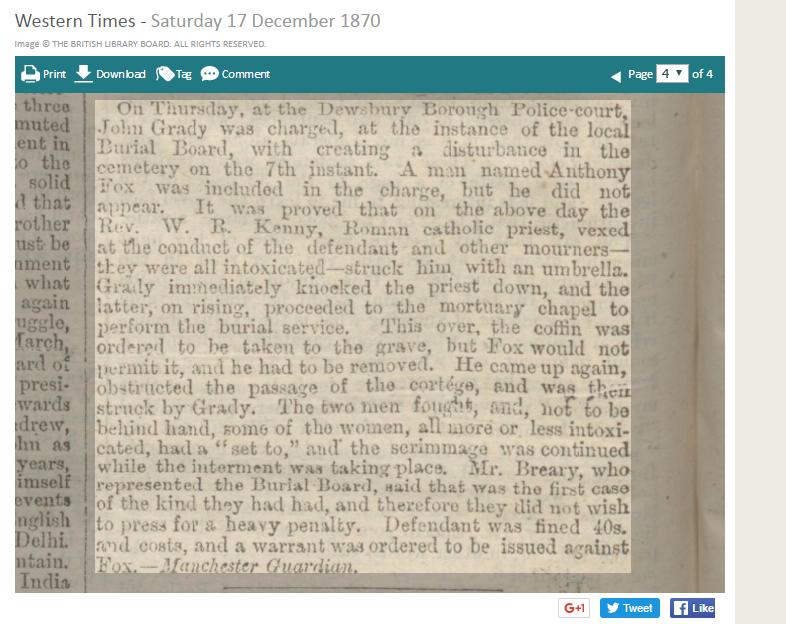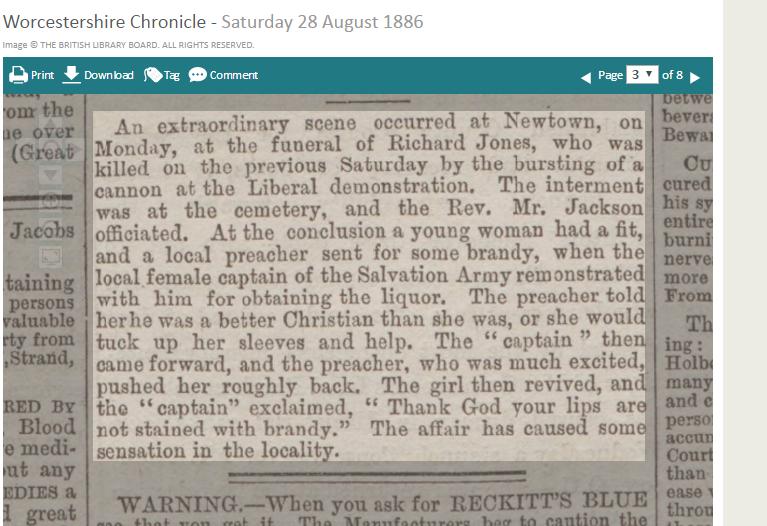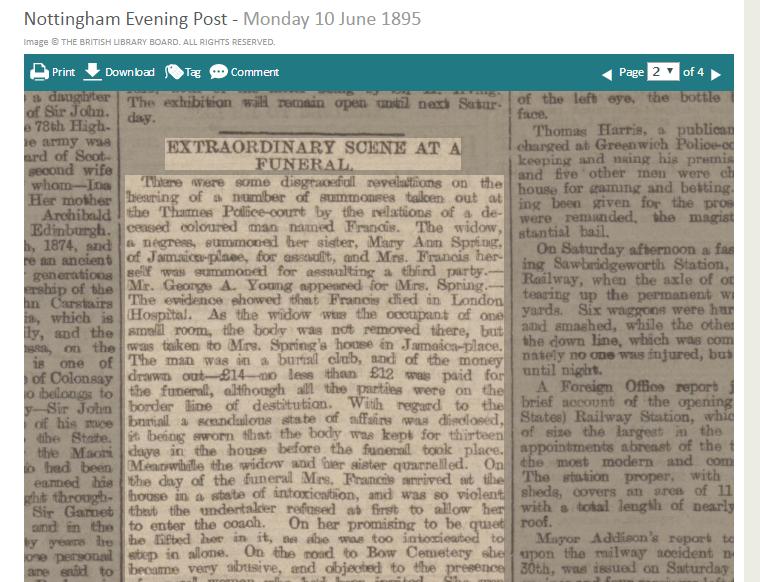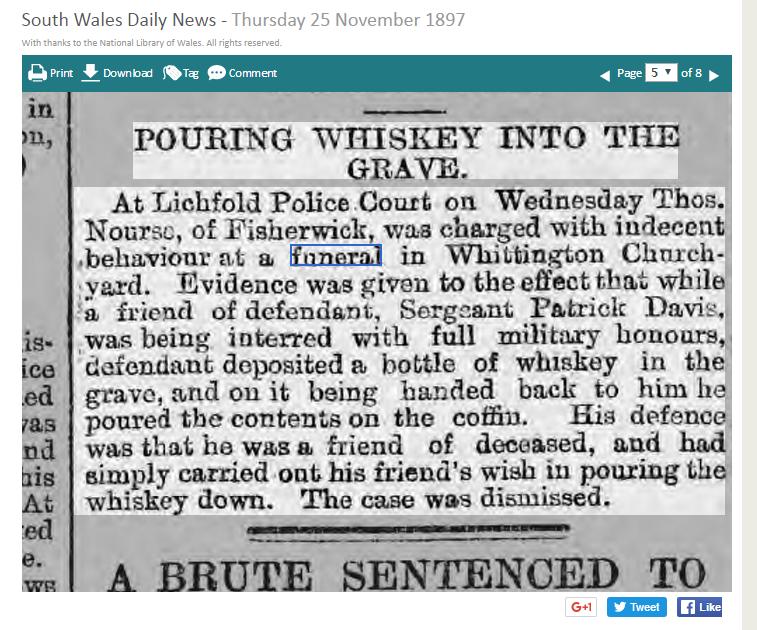Drunk Funerals April 16, 2025
Author: Beach Combing | in : Uncategorized , trackback
These were some footnote funerals from Beach’s project, some months ago, to record bizarre 19C funerals. How our Victorian ancestors got excited about alcohol. Here is a nice whisky bottle scene, by now a stock of many films. It is difficult not to sympathise with the defendant in this 1897 case.
At Lichfield Police Court on Wednesday Thos. Nourse, of Fisherwick, was charged with indecent behaviour at a funeral in Whittington Churchyard. Evidence was given to the effect that while a friend of defendant, Sergeant Patrick Davis, was being interred with full military honours, the defendant deposited a bottle of whiskey in the grave, and on it being handed back to him he poured the contents on the coffin. His defence was that he was a friend of deceased, and had simply carried out his friend’s wish in pouring the whiskey down. The case was dismissed.
Here is one priggish account from 1886:
An extraordinary scene occurred at Newtown, on Monday, at the funeral of Richard Jones, who was killed on the previous Saturday the bursting of a cannon the Liberal demonstration. [wth?!?] The interment was at the cemetery, and the Rev. Mr. Jackson officiated. At the conclusion a young woman had a fit, and a local preacher sent for some brandy, when the local female captain of the Salvation Army remonstrated with him for obtaining the liquor, the preacher told her he was a better Christian than she was, or she would tuck up her sleeves and help. The ‘captain’ then came forward, and the preacher, who was much excited, pushed her roughly back. The girl then revived, and the ‘captain’ exclaimed, ‘Thank God your lips are not stained with brandy.’ The affair has caused some sensation in the locality.
But there are some all out drunk fights, 1870: the surname and the fact of a Catholic priest might suggest Irish migrants (navies?) in Britain.
It was proved that on the above day the Rev. W. R. Kenny, Roman catholic priest, vexed by the conduct of the defendant and other mourners – they were all intoxicated – struck him with an umbrella. Grady immediately knocked the priest down, and the latter, on rising, proceeded to the mortuary chapel to perform the burial service. This over, the coffin was ordered taken to the grave, but Fox would not permit it, he had both removed. He came up again, obstructed the passage the cortege, and was struck by Grady. The two men and, not to be behind hand, some of women, all more or less intoxicated, had a ‘set to,’ and the scrimmage was continued while the interment was taking place.
Here is a drunk wife (Mrs Francis), an angry crowd and a fight at the graveside in 1895.
On the day of the funeral Mrs. Francis arrived the house a state intoxication, and was so violent that the undertaker first refused to allow her to enter the coach. On her promising to be quiet lifted her in it, as she was too intoxicated to step alone. On the road to Bow Cemetery she became very abusive, and objected to the presence of several women who had been invited.
The husband’s lovers or just chance dislike?
She was refused admission into the chapel where the burial service was held, and at the grave side a free fight occurred. Mrs. Francis would have been thrown into the grave on the top of her late husband’s coffin, but for the intervention of the cemetery authorities. ‘It was her blood,’ she told Mr. Dickinson, which ‘watered her husband’s coffin and not her tears.’
This all comes from a subsequent court case.






